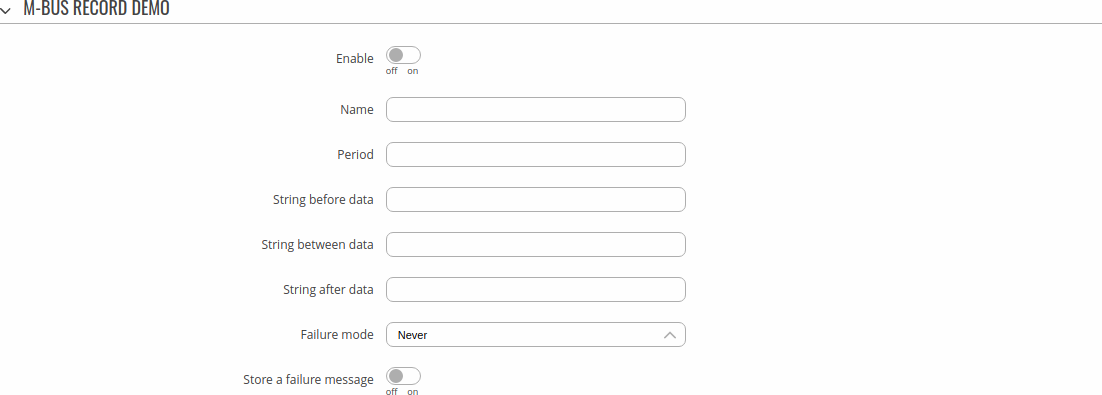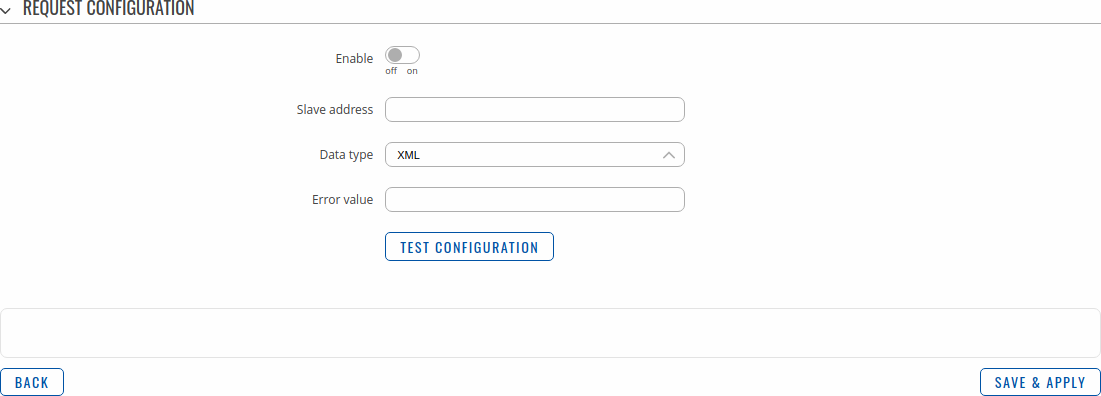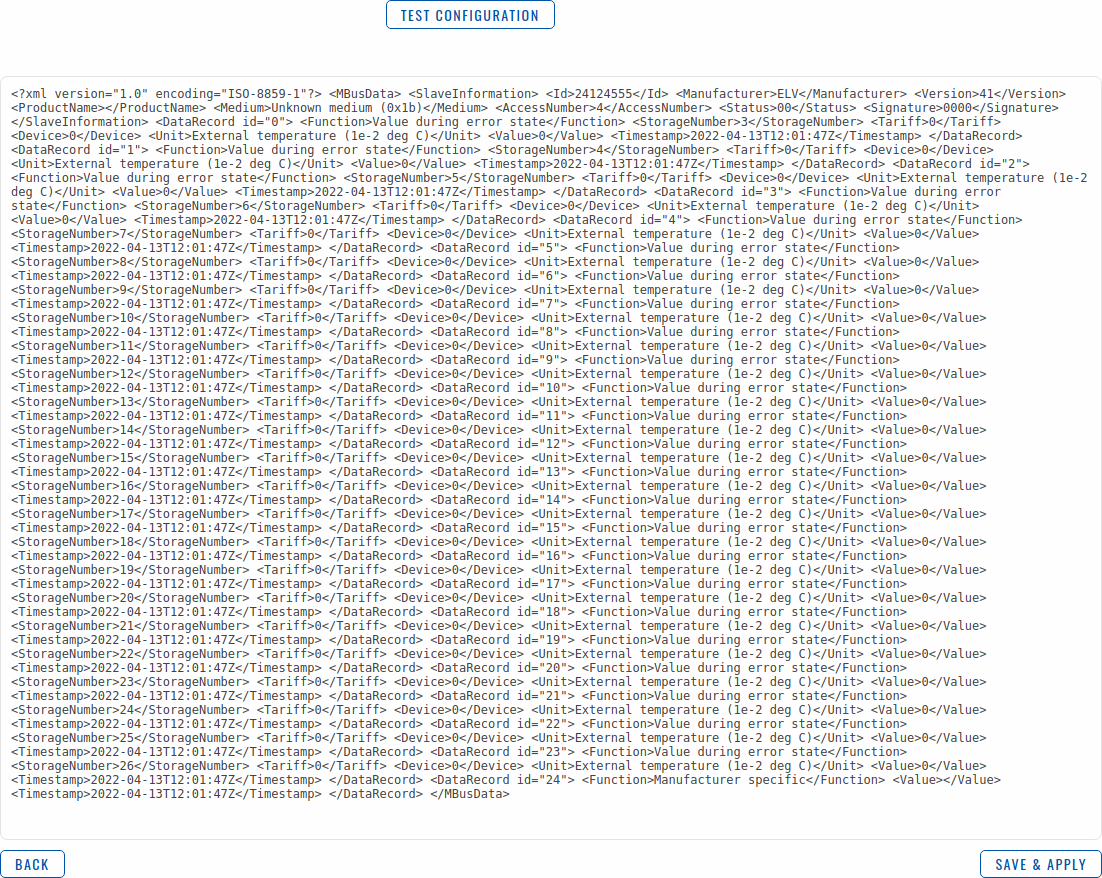Difference between revisions of "Template:Networking rutos manual mbus"
Gytispieze (talk | contribs) |
Gytispieze (talk | contribs) |
||
| Line 149: | Line 149: | ||
[[File:Networking_rutos_manual_mbus_record_request_configuration_edit_test_configuration_v1.png|border|class=tlt-border]] | [[File:Networking_rutos_manual_mbus_record_request_configuration_edit_test_configuration_v1.png|border|class=tlt-border]] | ||
| + | |||
| + | [[Category:{{{name}}} Services section]] | ||
Revision as of 11:56, 17 January 2023
Template:Networking rutos manual fw disclosure
Summary
The M-Bus (Meter Bus) is a cost-effective fieldbus communication protocol for transmitting energy consumption data. A central master – in this case {{{name}}} – communicates via a two-wire bus (up to max. 250 slaves per segment) with bus devices (e.g., heat meter, water meter, electric meter, gas meter).
This manual page provides an overview of the M-Bus functionality in {{{name}}} devices.
M-Bus Settings
The M-Bus Settings section is used to configure the general service functionality. The figure below is an example of the M-Bus Settings and the table below provides information on the fields contained in that section:
| Field | Value | Description |
|---|---|---|
| Enable | off | on; default: off | Enables the service. |
| Baud rate | 300 | 600 | 1200 | 2400 | 4800 | 9600 | 19200 | 38400; default: 2400 | Specifies the M-Bus slave network baud rate. |
| Database location | RAM memory | Flash memory; default: RAM memory | Specifies where the database will be stored.. |
Records
By default there are no Records instances created. To start configuring, add a new record using the Add New Instance section below.
M-Bus Record
The M-Bus Record section is used to configure the general record instance. The figure below is an example of the M-Bus Record and the table below provides information on the fields contained in that section:
| Field | Value | Description |
|---|---|---|
| Enable | off | on; default: off | Enables the service. |
| Name | string; default: none | Name used for distinguishing purposes. |
| Period | integer [1..86400]; default: none | Specifies the period how often record data will be collected. |
| String before data | string; default: none | String that will be appended before request data. |
| String between data | string; default: none | String that will be appended between request data. |
| String after data | string; default: none | String that will be appended after request data. |
| Failure mode | Never | Any requests failed | All requests failed; default: Never | Specifies when whole record is considered as failure. |
| Store a failure message | off | on; default: off | Select whether to store a failure message in the database or do nothing on failure. |
Request Configuration
In this section, you can configure requests from slaves. By default there are no instances created. To add a new instance and start configuring press the Add button.
Request Configuration Edit
| Field | Value | Description |
|---|---|---|
| Enable | off | on; default: off | Enables request processing. |
| Slave address | int | hexstring; default: none | Address of the slave to be inquired. |
| Data type | XML | HEX | BIN; default: XML | Data type to process the received data. |
| Error value | string; default: none | Changes request data to this value if request fails. |
| Test configuration | button; default: - | Tests the current configuration. |
Test Configuration
Before saving, you can check if your configuration works accordingly by pressing the Test Configuration button. You should see the data in a field below:
[[Category:{{{name}}} Services section]]





